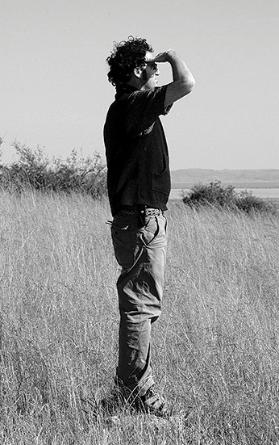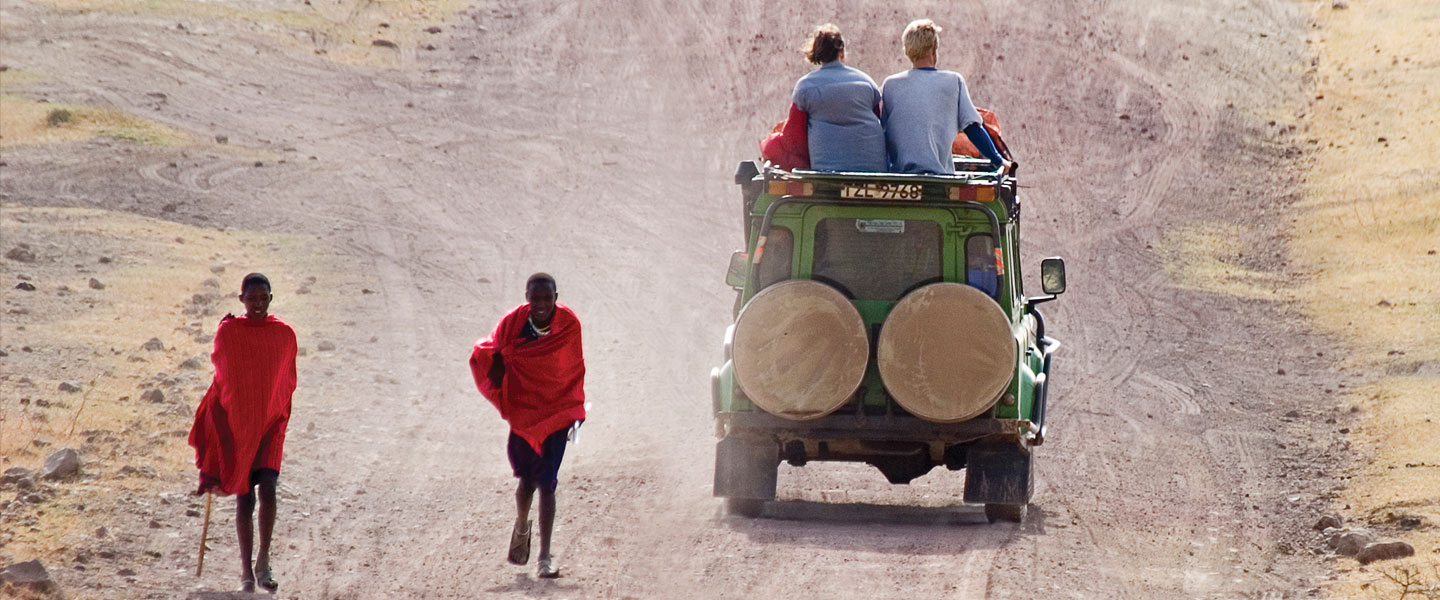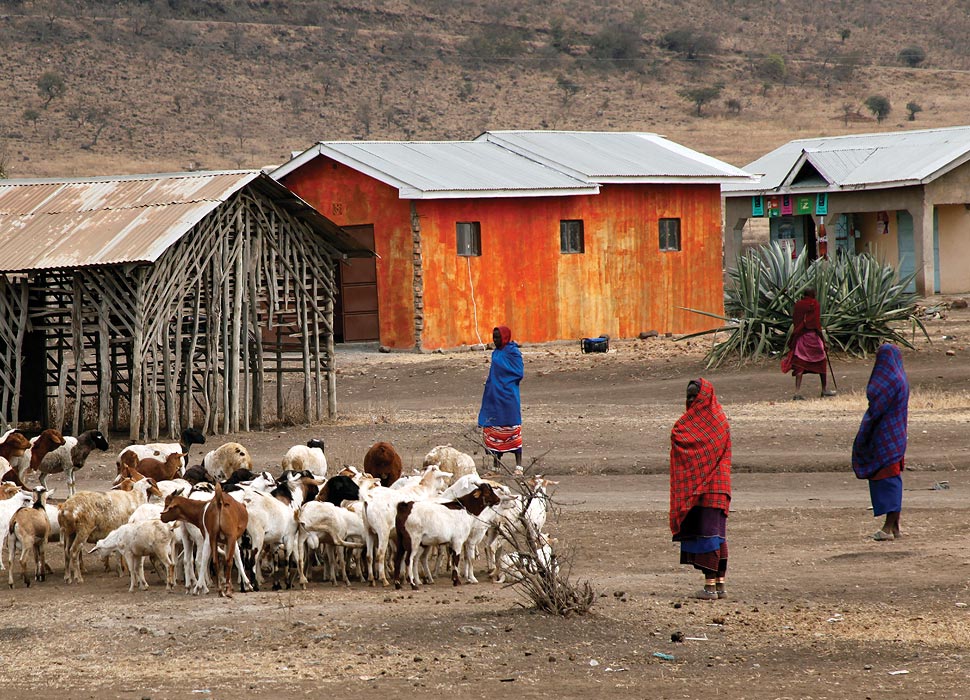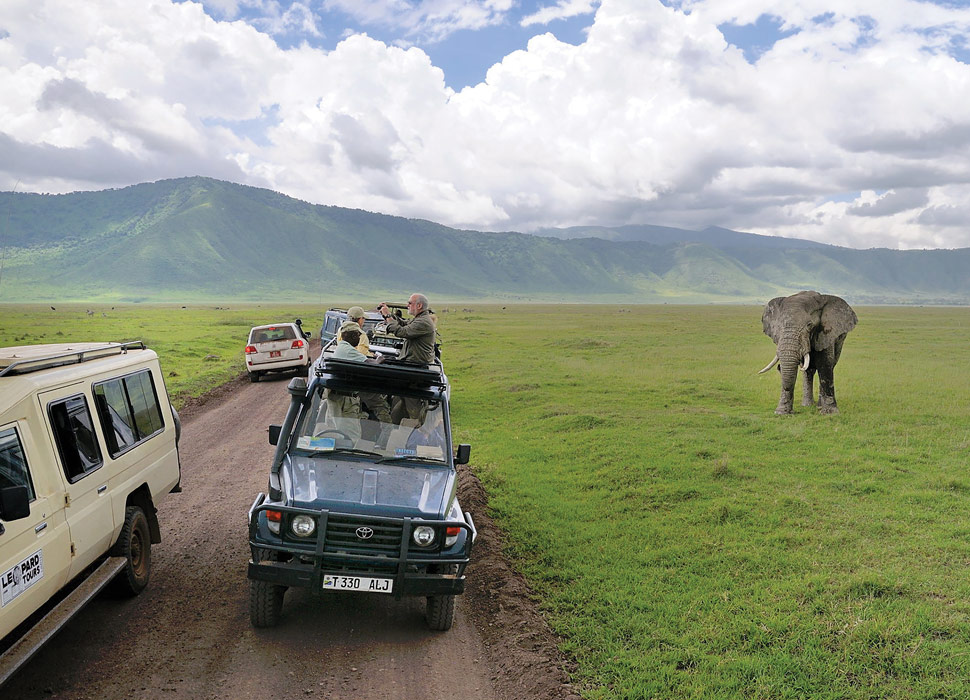Safari Tourism
Benjamin Gardner '93 writes about his time as an undergraduate student living with the Maasai, a semi-nomadic people inhabiting southern Kenya and northern Tanzania.
I spent my first day walking around Loliondo town. The place was a curious mix of people who had moved to the district headquarters and established homes and small farms in the high-altitude plains. By May, the maize fields were tall and green, awaiting the end of the rains in June for harvesting in July or August. Maize fields were a common sight across Tanzania. But not, I knew, in Maasai villages. Unlike most peasant farmers, who lived on beans, maize and a variety of green leafy vegetables, tomatoes and onions, the Maasai lived primarily on milk and occasionally meat.
Loliondo town fascinated me, but I couldn’t help but feel that I had yet to arrive in the “real Africa” I had been imagining. I did not have to wait much longer.
In the middle of my second night, loud knocking and shouting awakened me. Maasai people throughout the district and the country knew Lazaro Parkipuny as the go-to leader for pastoralists, especially when it came to handling trouble with state authorities. On this night, Maasai from the villages of Ololosokwan and Soitsambu came seeking his assistance. I heard the group of men speaking to Parkipuny in the room next to me. After several minutes of animated conversations, of which I understood not a word, Parkipuny knocked on my door.

That it was pitch black only seemed to encourage Parkipuny’s desire for speed. The Land Rover careened across the red dirt roads, frequently hitting bumps that would send the little vehicle into the air and then forcefully back down again. I was only partially reassured, as the other passengers did not seem particularly afraid. My fear of dying was mitigated by my excitement at getting a lift to a real Maasai village. During the 40-minute drive, Parkipuny broke off his conversations twice to speak to me. “This land,” he told me, “is Maasailand. The government tried to take this from us and turn it into a barley farm in the 1980s, but they failed. We took them to court and we won. This land is ours now, and people are afraid of us here in Loliondo. They know they can’t take our land.”
Parkipuny turned off the dirt road. Without reducing speed, he wove across the plains, avoiding trees, dry riverbeds, and occasionally zebra, gazelle and wildebeest standing motionless in the open grasslands between scattered homesteads. We eventually stopped in front of a thorn fence enclosure. Parkipuny told me to get out here. “The boy next to you is Marcus Nalang’o. He speaks English and will be your host for the next four weeks. I will pick you up here at the end of the month.”
With that, I followed Marcus out the back door of the Land Rover. During the ride Marcus had not spoken a word to me. Although younger than the other men in the car, he resembled them, wrapped in a red-hued blanket with a staid expression on his face. For no good reason, I had assumed that he spoke only the Maasai language, Maa. A young man of about my own age of 22 clearly hadn’t come to Loliondo that evening to pick up a Mzungu (white person of European ancestry) visitor. As it turned out, I could not have asked for a more gracious host; Marcus would become a close friend, collaborator and research assistant for many years following our month together.
After about 20 minutes, three young boys from Marcus’ enkang’ (Maasai homestead) managed to remove the thick thorn-strewn branches acting as a barrier for the small entrance in the otherwise tightly wrapped enclosure. The design of these elaborate living fences varied across pastoral communities in Tanzania. The exceedingly strong weave of this fence was a sign that threats from predators like lions, hyenas and wild dogs were very real. Hundreds of cows, sheep and goats slept in the paddock in the middle of the homestead, which Marcus’ father shared with his three adult sons and their families. As a member of a polygamous society, Marcus’ father had three wives, and each woman had her own enkaji (Maasai house) within the family compound.


